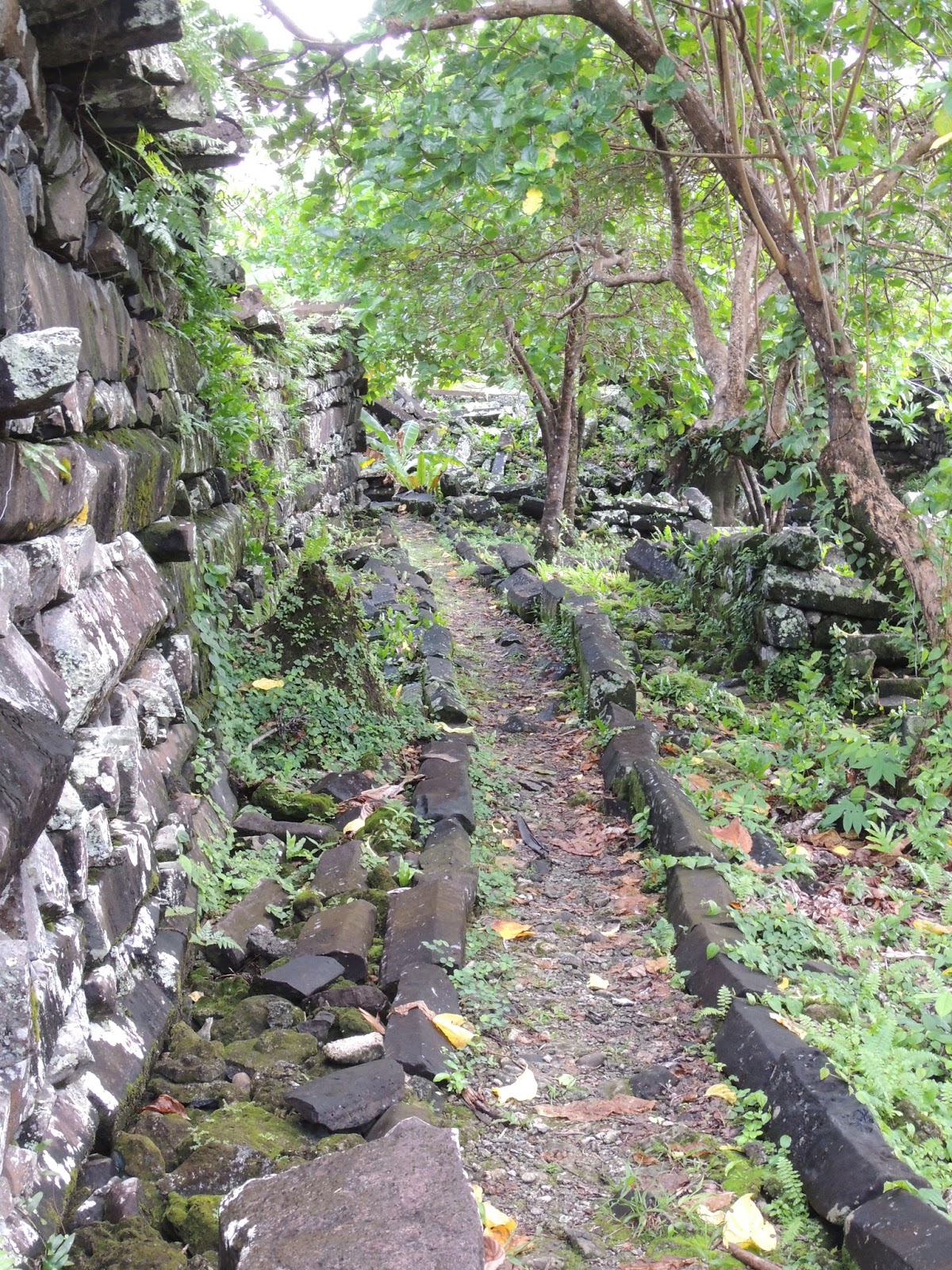Where I am: Pohnpei, the largest state in
Micronesia.
My house: I live in a
small 2 bedroom house made of concrete with a metal roof. I have my own
room to myself, with a lock on my door. The floor of my room is covered
with ceramic tiles and my only furniture is a very thin mattress. I have running
water, a flushing toilet, an indoor "shower" (basically a basin that I
put water in and use a bucket to shower with), and electricity. No
internet at home, but luckily my next door neighbor (who is related to
my family) has internet.
My Family:
- My Pahpa
(father) Luis: he speaks the most English in my family. He
works for the power company and likes to wear cowboy boots. He is super
chill and seems genuinely happy to have me staying with his family.
- My Nohno (mother) is Serlihna. She is nice but speaks very
little English.
- Rei-puchak (my brother) is Lester. He just graduated from high school and speaks English pretty well. We like to hang out and listen
to Rap and Rock and Roll together.
- Rei-serepein (my sister) is named
Yulihna (Youli for short). I think she is younger than me, but I
haven't asked her age yet. She speaks some English, but she usually just
smiles and repeats whatever I say when I talk to her. My youngest sister, Selina, is 13. She is still pretty shy and speaks very little English to me despite understanding most of what I say to her. I have been bonding with her over Miyazaki movies. Finally I have an older sister
named Yumileen. She is married and has a two year old boy. She has her own place so I don't see her that often.









 Nan Madol was awesome. We spent hours climbing up, over, and around
the rocks. We even ventured out to the
beach to get a good view of the ocean.
The entire time I kept my eye out for the shark swimming hole, but I was
not able to find it. As we were leaving
Nan Madol, I asked Garrison, our Training Manager (or Training Master as we
like to call him) about the sharks. He
informed me that we only explored a small portion of Nan Madol and that we intentionally
avoided the infamous swimming spot. He
also was able to clarify the reasoning for throwing a rock before jumping in
the water. You are supposed to throw in
a rock, wait for the sharks to surface, and then jump in as the sharks are
going back down. In this way you are neither
catching them unawares nor jumping on top of them. This explanation didn’t make me feel much
better about swimming with the sharks; I don’t think I will be swimming at Nan
Madol any time soon.
Nan Madol was awesome. We spent hours climbing up, over, and around
the rocks. We even ventured out to the
beach to get a good view of the ocean.
The entire time I kept my eye out for the shark swimming hole, but I was
not able to find it. As we were leaving
Nan Madol, I asked Garrison, our Training Manager (or Training Master as we
like to call him) about the sharks. He
informed me that we only explored a small portion of Nan Madol and that we intentionally
avoided the infamous swimming spot. He
also was able to clarify the reasoning for throwing a rock before jumping in
the water. You are supposed to throw in
a rock, wait for the sharks to surface, and then jump in as the sharks are
going back down. In this way you are neither
catching them unawares nor jumping on top of them. This explanation didn’t make me feel much
better about swimming with the sharks; I don’t think I will be swimming at Nan
Madol any time soon.













